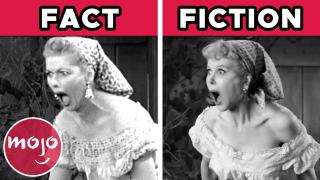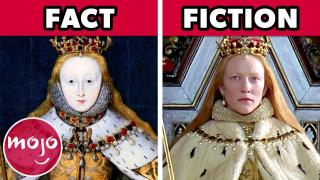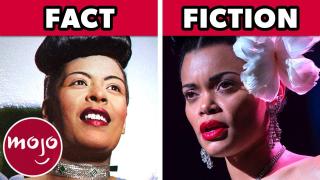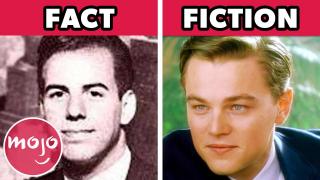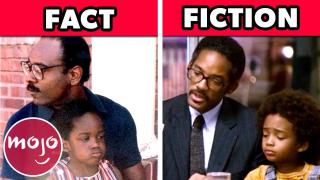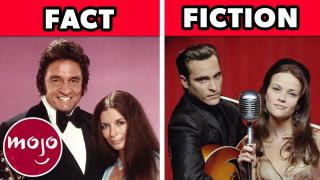Top 10 Things Newsies (1992) Got Factually Right & Wrong

It’s a fine life “Carrying the Banner.” Welcome to MsMojo, and today we’ll be counting down our picks for the Top 10 Things Newsies Got Factually Right and Wrong.
For this list, we’ll be looking at the real live Newsie strike that inspired the iconic 1992 Disney movie, what made it onto the screen, and what we didn’t get to see.
#10: The Newsies Were Just a Bunch of Angry Kids with No Money
Right
Top 10 Things Being the Ricardos Got Factually Right & Wrong
Kudos to Disney; the movie sets the stage with a monologue that’s pretty accurate. Like all of the millions of child laborers in the industrial age, the Newsies either came from dirt poor families, or they were dirt poor orphans fending for themselves. Even the best of them could only expect to earn about a maximum of 35 cents a day. With that money, they had to pay the lodging fee for the overcrowded boarding houses where Newsies could rent a bunk, scrounge up something to eat, and still have enough money left over to buy their newspapers the next morning. Every penny was desperately needed, and any extra expense was something to be concerned about, to say the least.
#9: The Strike Was Caused by a Sudden Price Hike
Wrong
Top 10 Things Elizabeth (1998) Got Factually Right and Wrong
The real story behind the strike started a year earlier. In 1898, every paper in New York City raised their distribution prices from 50 to 60 cents for a one hundred paper bundle in order to take advantage of reader interest in the Spanish American War. With lots of juicy headlines, the Newsies didn’t have a problem moving the papers, and so no one really had a problem with the increased costs, but by summer of 1899, the war was long over, and sales had slowed down. One by one, the city papers dropped their prices again… except two: the evening editions of Joseph Pulitzer’s New York World and William Randolph Hearst’s New York Journal. And the Newsies? Well, they had some feelings about that situation.
#8: The Strike Started in Lower Manhattan
Wrong
Top 10 Things The United States Vs. Billie Holiday Got Factually Right & Wrong
Manhattan always seems to get all the credit for everything, but the Newsies who started the historic strike were actually far away - in Long Island City, Queens. On July 18, 1899 they kicked things off when they mobbed and overturned a New York Journal distribution wagon and demanded a cut back on the bundle prices of the papers. Within hours, the strike had spread through Queens, but it wouldn’t take hold in Brooklyn or Manhattan until the next day. We know that Manhattan likes to think they’re the coolest borough around, but in this case they were late to the party.
#7: The Newsies Published Their Own Strike Newspaper
Right
Top 10 Things Catch Me If You Can Got Factually Right & Wrong
There’s no proof that Joe Pulitzer ever said the “power of the press is the greatest power of them all” to the Newsies directly, but they still picked up a thing or two while they were peddling his papers. Just like their Disney counterparts, the strikers used their own paper to grow the power of their movement. Throughout the strike, the Newsies published several circulars to organize union meetings and rallies, and to speak directly to the public about the reasons for the strike. Good PR is half the battle no matter what the issue is; in the end, the Newsies’ media savvy probably played a big part in what success they achieved.
#6: It Was a News BOYS Fight
Wrong
Top 10 Things The Pursuit of Happyness Got Factually Right & Wrong
We love the movie’s cast of cute boys with killer moves, but that doesn’t mean we wouldn’t have wanted to see some News Girls in the mix. Especially because in real life, there were plenty of them. The bad news is, once the strike got going most of the Newsies girls turned scab. As a rule, strikebreakers got beat up, but girls were the exception, and they took full advantage of that fact. There was a newswoman who was a minor hero to the cause, though. Annie Kelly was a passionate advocate of the strike, and was widely respected by her fellow Newsies. One paper even called Annie, “The brick of all women most faithful to the strikers.” We only wish we’d seen her on-screen.
#5: The 1899 Strike Was a Novel Idea
Wrong
Top 10 Things Walk the Line Got Factually Right & Wrong
The way the guys react in the movie, you’d think no Newsie had ever decided to go on strike before, but the truth is that by 1899 it wasn’t exactly the revolutionary concept it’s made out to be. Newsies hadn’t just been on strike before, they’d been on strike a lot. There were organized actions in 1884, 1886 and 1887, as well as one in 1889 that involved the World and the Journal. So why does the 1899 strike get all the love? Well, for one thing it was able to coordinate Newsies from across five boroughs of the city, but it also saw some measure of success. History is better at remembering winners, especially if they inspired others to follow in their footsteps.
#4: All the Character Were Invented for the Movie
Wrong
Top 10 Things What’s Love Got to Do With It Got Factually Right & Wrong
As much as we love the boys as they were played in the movie, it’s even cooler that a bunch of them are based on real leaders of the Newsie Strike. According to newspaper stories that covered the historical event, Mush Meyers, Boots, Crutchie, and Kid Blink were the names of members of the Manhattan Newsies, while everyone’s favorite gambling man, Racetrack Higgins was named after a Newsie leader from Brooklyn. What about Spot Conlon, though? Don’t worry Brooklyn fans, he had a real counterpart too, and just like in the movie, he was known for his trademark pink suspenders.
#3: Jack Kelly Was the Real Leader of the Strike
Wrong
Top 10 Jack Black Roles
Dashing cowboy Jack Kelly IS an invention of the silver screen, but just because he’s not real doesn’t mean there isn’t some truth to him. Jack seems to be based more closely on the real-life Kid Blink Baletti, who was demoted to a supporting character in the movie. Like Jack, Kid Blink was an incredibly charismatic leader and a strong speaker who often acted as the public face of the strike. And also like Jack, Kid Blink got into hot water with his friends when he showed up one day in a fancy new set of clothes, leading the Newsies to believe he’d taken a bribe to turn scab. Sadly, unlike in the movie, the real strike would never recover from their leader’s betrayal.
#2: The Irving Hall Rally Was the High Point of the Strike
Right
Top 10 Things Erin Brockovich Got Factually Right & Wrong
On July 24, 1899, more than 7,000 Newsies from the boroughs of New York gathered at Irving Hall for a huge union rally. It wasn’t just them either. By this point, the Newsies had succeeded in gaining some popular support; the rally was sponsored by a New York state senator, and a number of business leaders and politicians showed up to voice their approval of the strike. The stars of the night were the Newsies themselves, though. The union president used his stage time to urge non-violent protest, while Annie Kelly, Kid Blink, and Racetrack all gave rousing speeches that were quoted in papers the next day. After that night, nobody could deny that these kids were a force to be reckoned with.
Before we unveil our top pick, here are a few honorable mentions.
Joseph Pulitzer Was the Sole Enemy of the Striking Newsies: Wrong
William Randolph Hearst Had Just as Much to Do with the Strike as Pulitzer
The Headquarters of the Strike: Right
Most of the Newsie Strike Action Did Go Down at City Hall Park, Manhattan
#1: The Strike Ended with a Total Victory
Wrong
Top 10 Things Hidden Figures Got Factually Right & Wrong
Eventually, the best the Newsies could get was a compromise. The price would stay where it was, but Hearst and Pultizer agreed that their papers would buy back unsold merchandise at the end of the day in order to prevent the Newsies from eating a loss. It wasn’t the result the Newsies had hoped for, but it was still kind of a big deal. These angry kids had managed to make two of the most powerful men in New York listen to them at a time when poor people had almost no public voice. It was an important step in the labor movement that would eventually improve the lives of everyone in the United States. That makes them “Kings of New York” to us.


 0
0
 1
1
 report
report

